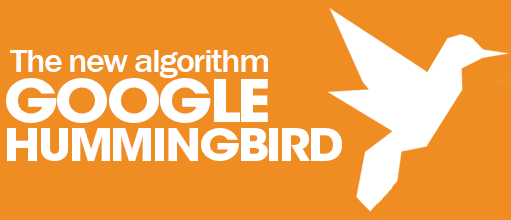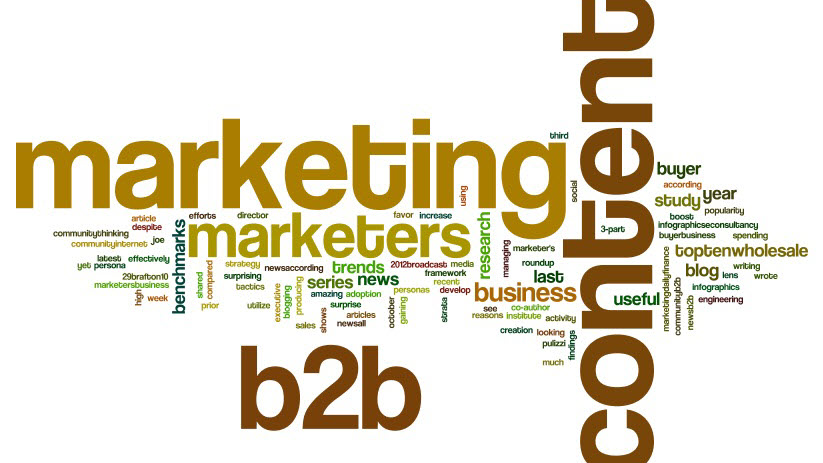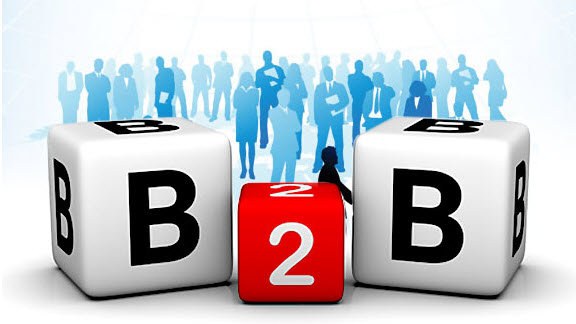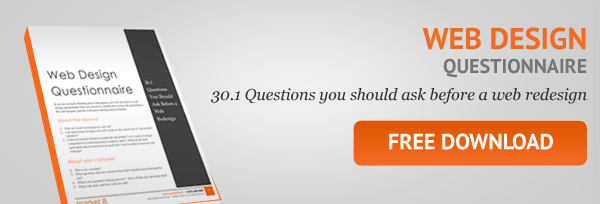
As 2013 comes to a close, you want to look back at what was big in B2B web design throughout the year and what you can expect for 2014. This time is always a great occasion for using retrospection to determine what worked and what didn’t work over the past 12 months.
B2B is very dynamic and evolving, which is why various trends always pop up in any given year. However, some trends make a far bigger impact than others and are here to stay instead of just being a flash in the pan.

As 2013 winds down, you inevitably look to 2014 and what it has in store for the B2B industry. People always make predictions about what’ll be hot in the New Year, and this can be a hit-and-miss exercise, but one nevertheless worth spending time on.
Here are some of the biggest stories around B2B web design for 2013 and what you can look forward to in 2014.
Google Updates Made an Impact (Again)
In the past couple of years, Google updates have made a huge impact on Internet content, going back to Panda in 2011 and continuing with Penguin in 2012. The former imposed quality content as a prerequisite while the latter promoted only links that were naturally attracted from valuable content.
Hummingbird
Hummingbird was 2013’s Google update that made a huge impact. It took the changes to SEO that Panda and Penguin created and totally overhauled them. The most noteworthy impact of Hummingbird was the emphasis on improving both conversational and semantic language elements.

In practical terms, this means that the Google algorithm is now much more effective at recognizing how average, real folks talk to each other. This enforces the consistent move away from keyword phrases that just don’t sound right.
Google Authorship
Google Authorship also made an impact in 2013. However, it was more that businesses (including B2Bs) finally understood that just who creates their online content is becoming increasingly vital. Google Authorship is a technique that Google uses to show in the search results who the author of the content on a particular webpage is.

It essentially connects quality content to its specific creator (read: author) and sets the stage for Author Rank to actually become a part of Google’s algorithm ranking factor. This has caught the attention of businesses, which now understand that generously compensating these topical-authority writers can be a tactical edge in creating highly effective B2B copy.
Emotion in B2B
There’s always been a debate in the B2B world about whether emotion is an integral aspect of successfully selling and connecting with your buyers. That debate was largely put to rest once and for all in 2013, thanks to the Corporate Executive Board’s landmark study.
The CEB concluded that B2B buying is highly personal and, therefore, emotional. The huge takeaway from the study was that B2B companies that get to their buyers on an emotional level can make double the impact than companies that are selling function alone.

The study also outlined several strategies that B2B companies could implement to connect with their buyers in an emotional way:
- You should understand the emotions and personal objectives of your customers. This involves the use of openly observing your customers to identify either context-based or non-verbal cues that indicate underlying emotions.
- You should shape brand messages that communicate personal value. You can achieve this by relating to your customers via using your customers’ ordinary language instead of your internal company lingo and jargon.
- You should drive the actions of your buyers. This means constantly making your buyers remember that their present pain points are still a lot worse than the uncertainty of some change.
- You should educate your customers. Educating your customers involves teaching them something new about their business needs. Then, you can set up your company perfectly as the provider of solutions and answers to these needs.
It’s very prudent and clever for you to establish a personal connection to your B2B buyers. According to the aforementioned study, your buyers feel a much closer emotional connection to you than they do with mere consumer brands. This makes sense when you consider that B2B companies sell bigger-value products and services than consumer brands.
Content for B2B
The old saying that content is king was never proven more true than it was in 2013. Online marketing is driven by highly valuable content; without providing valuable copy to your customers, you don’t have much. To quote Rebecca Lieb from the Altimeter Group: “Content is the atomic particle of all digital marketing.”
Content marketing also became less of an exaggerated, hyped-up phrase. Instead, it increasingly moved toward becoming the real driving force behind all successful online marketing efforts. This obviously includes the valuable information contained on any corporate blog and in any free ebooks, for example.

Thanks to a survey conducted by the B2B Technology Marketing Community on LinkedIn, you can now appreciate what the different B2B content marketing trends for 2013 were. They include:
- Content is increasingly going mainstream. In addition, it’s also getting a lot more sophisticated, which empowers marketers to both generate more leads and enable thought leadership.
- The popularity of white papers is on the decline. Compared to very digestible and interactive formats such as video, white papers are getting less popular as a form of content marketing.
- More content is in demand. Greater than 80% of all content marketers are raising their content production in 2014.
- YouTube is winning against Facebook. While YouTube is increasingly getting more popular as a social-media platform for B2B companies to connect with their audiences, Facebook is losing ground in that respect.
- Marketing automation is on its way up. Today, some 61% of all marketers rely on marketing automation platforms. This represents an increase of 43% over 2012.
The survey also revealed another interesting fact: Almost all (93%) B2B companies create their content from scratch. This ties in to the trend discussed above, which is that businesses are increasingly beginning to recognize that generously rewarding authors who are an authority on their topic is a strategy for creating great copy.
Web Design for B2B
Designing for B2B is super-important because, without a user-friendly website, you’ll increase friction and cause buyers to leave your site. There go your conversions. In 2013, various web-design trends were identified that should matter to every B2B company.

Responsive Design
Responsive design means that a website and webpages should be designed in such a way to increase the user experience. Features include hassle-free navigation, easy reading and keeping scrolling, panning and resizing to a minimum. It also means that websites viewed on a mobile device shouldn’t suffer from navigation problems due to the difference in screen size between mobile and desktop.
Designing for Landing Pages
The landing page is the most important part of a B2B website since that’s where your lead-generation action takes place. Take care to design properly and carefully here. Essential elements of responsive landing page design were identified in 2013. These include:
- The Landscape Viewpoint: Think small and wide when designing a landing page for mobile.
- Spin Frequently: Be sure to constantly compare the mobile device landscape viewport to your portrait viewport. Since portrait’s the narrowest, remember to design for concise headline lengths.
- Constant Scrolling: Constant scrolling helps you to check if the whole landing page’s integrity was maintained throughout. Just frequently scroll down to the bottom of the landing page for quality control.
- Forms Appropriate for Fingers: Remember that people on mobile devices use their fingers; therefore, forms should be conducive to smooth and easy finger movements. Pay special attention to how forms scroll, fit and scale field types, how buttons conduct themselves and how problems are noticed.
- Interactive Content: Include more content in less space, but with greater sophistication. Be sure to use mobile app-like elements, such as tabbed content accordions.
- Very Communicative Pictures: Note how images on your landing page are seen at different viewports.
- Intelligent Navigation Choices: Determine exactly how many navigation tabs your design can efficiently support, based on the length of words.
- Optimize for Single-Touch Action: Steer clear of two-touch obligations for actuation.
- Responsive Design Everywhere: Make sure that even video and 3 rd -party media is responsive, too.
For inspiration and to get a good idea of what responsive B2B websites look like, see this list of the best B2B websites of 2013.
A Look Ahead to 2014…
The New Year always brings with it some trepidation, mainly due to brewing uncertainty over what 2014 will hold for the B2B world. In addition, whenever someone makes a prediction about what’s going to be big in B2B in the next year, it usually falls into one of three categories: It will come true, it won’t or it’s just a recycled prediction from prior years.

With that in mind, it goes without saying to take predictions with a healthy grain of salt—you’ll be much better off emotionally. Still, predictions are fun because they can prepare you for a taste of what’s to come in the New Year.
Here are some of the biggest predictions for 2014 for marketing and the user experience.
Marketing
Marketing predictions may or may not come true. Will these specific predictions come true?
- Mobile will arrive. Mobile has been here for, like, the last few years already. Though mobile traffic is still in the minority by far—only 15% of the world’s Internet traffic is mobile—it’s steadily growing. Your B2B company should be on top of this trend.
- Customers will dictate your business relationship. This has also already happened. When have customers never been in control? The customer’s always right, after all.
- Social-media engagement isn’t all it’s cracked up to be. Strike up a healthy balance with lead generation, message broadcasting and, yes, social-media engagement.
- SEO will never die. Just ignore all those relentless predictions, year after year, that SEO will die. SEO will continue to be highly relevant in 2014.
- Visual content creation will get bigger. This has already been growing for a few years. Visual content can be anything from slideshows and infographics to screenshots and even basic stock photos.
- Marketing will grow closer to publishing than ever before. While marketing will still be distinct from publishing, your B2B company’s marketing side will incorporate more of a publishing mindset.
- CMOs will continue to believe in social media. CMOs already have embraced social media, with a staggering 90% of executives admitting that social media is vital for brand awareness and reputation. This’ll only get stronger in 2014.
User Experience
User experience is vital to any B2B website. Reduce friction, and increase conversions. Increase friction, and lessen conversions. Here’s what you can expect in the way of some of the top user-experience predictions for 2014.
- More Well-rounded Content Strategists. Content strategists will also begin to specialize in user-experience design and the extension of user experience and business goals into branded content.
- Improved Targeting for Gestures. There will be fewer numbers of gesture combinations on the same part of the screen.
- Skeuohaptic Response Advances. 2D interfaces will be made to feel more tangible through attempts to offer feedback via emulated reactions.
- Navigation Icon Overuse. The navigation icon (the tiny, three-line icon) will be increasingly popular. This will lead to more websites hiding or minimizing navigation overall.
- People and Shyness on Social Media. Social media users will get more tactful and not share every aspect of their personal lives on social-media sites. The slew of phone hacking and personal-information breaches that dominated the news this year will make people think twice.
- Serendipity With Actual Meaning. 2014 will feature a movement toward digital experiences that pleasantly surprise users by providing spontaneous and random discovery.
- The Mark of Augmented Reality. Google Glass debuts next year, ushering in augmented reality, which features liberation from holding handheld devices to interact with other users.
Conclusion
2013 draws to a close, prompting you to reflect on everything that impacted B2B. At the same time, your eyes should already be looking ahead to 2014, so that you can try to anticipate just what trends can affect your B2B company. Whereas some big-news items were limited to only last year, such as Google’s Hummingbird, other highlights will still be relevant in the New Year, such as responsive design in landing pages and using emotion in B2B.

Take the lessons from 2013 and remember them in the New Year. Be open to whatever trends pop up in 2014, and get on top of them quickly if they make sense for your buyer persona. There’s nothing like being ahead of a trend before everyone starts adopting it.







